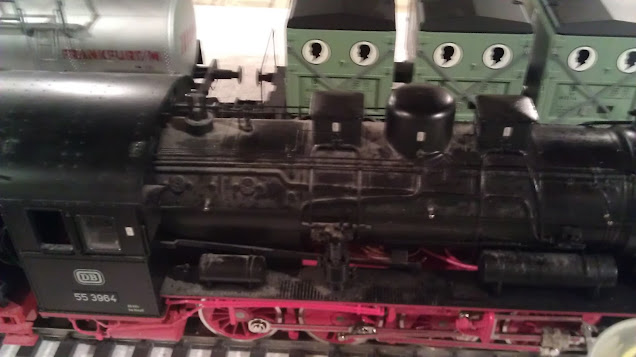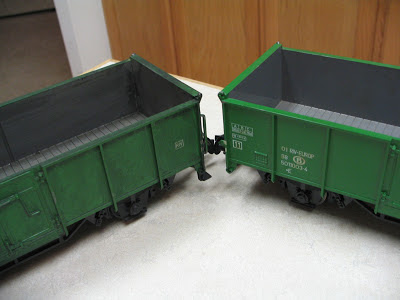A few weeks ago a member of the Digitrax group on Yahoo posted about using a special product called Cyber Clean to clean his dusty and / or dirty model trains. I think any modeler can relate to the difficulty of trying to clean intricate and detailed models with a cloth or a feather duster. Well, I picked up a jar for about $7 on eBay, and it showed up last week. On Sunday I decided to give it a try...
Here is the product in question. It's a 5-oz jar, about the same size as a Play-dough jar.
The material is a 'putty', similar to the stuff kids play with called 'slime'. The idea is to press this material onto the item you are trying to clean, and then pull it off again. Dirt and dust is supposed to stick to the Cyber Clean and your item is supposed to come out shiny as new without a lot of time and labor.
The locomotive I chose to use is a Marklin BR55. I have been using this loco throughout the construction of Carstenbahn One, so it has experienced its fair share of dust.
Yes, a perfect candidate!
The material is a little firmer than I had expected. If you are dealing with a model with a lot of very small added parts or fragile lines, this may not be the best solution, as you do need to give it some pressure to push it into the tightest spots. In any event, I would recommend that you do not force the material into all the cracks and crevices, but hold it gently but firmly against the model, and let the material slowly ooze its way into the details.
So here is the rear section of the boiler after about five minutes' work. Compare this with the 'before' image and you can see the dramatic difference.
I also tackled the tender. The imitation coal on the back would be an excellent test, since it's a BEAR to try and clean with a cloth, and this product seems perfect for it.
Again, here is the 'before' shot. As you can see, short of pulling the body off the chassis and putting it in the dishwasher, it would be very hard to get this clean.
Instead, a quick five minutes with Cyber Clean and the tender looks much, much better.
Cyber Clean has some of the same issues with getting into corners and creases that one would encounter with a rag, and it does absolutely nothing for any serious dirt or stains. However, to get the dust out of the tight spots on only semi-fragile models, it works well. It did a nice job on my BR55, and I look forward to using it on my dusty Neuffen station building I've had out of the box for close to twelve years.
For the paltry sum of $7 including shipping, it's worth having this handy product around.

















































